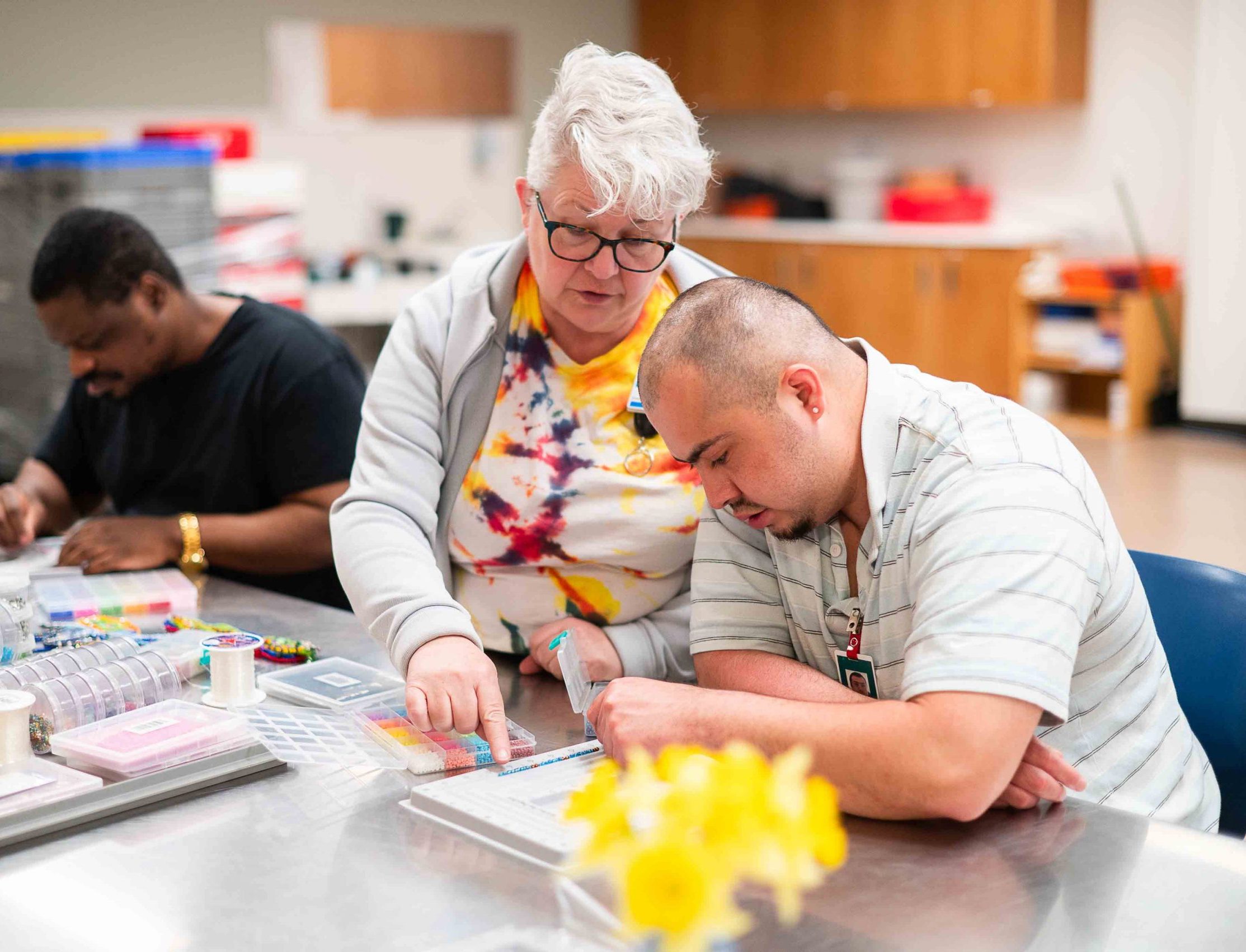We offer a variety of services to help you navigate this journey.
Home Patients & Families For Families & Caregivers
Here at Waypoint, we believe that families and caregivers are crucial to a patient's healing journey.

Delectation of Recovery Values
We will treat people with kindness, dignity and respect.
We will strive to meet the highest possible standards in services and support.
We will include people who receive care in treatment decisions.
We will ensure an accessible and responsive process for concerns, questions and complaints.
Care Partners
A Care Partner is a support person whose presence is considered essential to the safety and well-being of a patient while they are in the hospital. Most often, they are family or close friends of the patient who typically know the patient’s health history, lifestyle and personal values.
Visitors are people who come to the hospital to have a social visit with a patient.
A Care Partner is chosen by the patient or their Substitute Decision Maker (SDM). A Care Partner provides essential care and support to the patient while they are in the hospital.
A Care Partner can assist their family member or friend in many ways, including:
- Helping with eating, mobility and bathing
- Assisting with communication with staff
- Providing emotional and cognitive support
- Advocating for them and supporting their decision-making
- Participating in planning their care both during their hospital stay and after discharge
As much as possible, every patient who wants a Care Partner should have access to one. However, there are certain instances and areas where Care Partners may not be permitted for safety reasons.
Patients can request a Care Partner before or after being admitted to the hospital. Please let your health-care team know you would like one, and they can tell you the next steps.
Care Partners can use technologies like Zoom or FaceTime to provide cognitive and emotional support to their family members or friends. These tools are safe and effective ways to stay connected. Care Partners should talk to the care team about setting up a virtual visit to facilitate this connection.
Care Partners who visit the hospital in person should carefully plan each visit with safety in mind, review any training received beforehand, and aim to complete multiple tasks during a single visit.
Understanding Germs and How They Spread
Germs are tiny organisms, often called bugs, microorganisms, viruses, or bacteria. They are invisible to the naked eye. While some germs are beneficial, others can cause illness by entering the body through the eyes, nose, mouth, or open wounds.
Personal Protective Equipment (PPE) includes items like gowns, gloves, masks, goggles, and face shields designed to protect against injury or infection. In a hospital setting, PPE is crucial for protecting your eyes, nose, and mouth—the primary entry points for germs.
Infection Prevention and Control (IPAC) refers to the measures taken to prevent the spread of germs. You might hear this term in the hospital. Examples of IPAC practices include physical distancing, screening for illness, disinfecting surfaces, wearing masks, and limiting close contact.
COVID-19 spreads easily among people, often without their knowledge. The virus is transmitted through tiny droplets from the mouth or nose, especially when an infected person sneezes, coughs, or touches their face and other surfaces.
Hand Hygiene:
- Washing with Soap and Water:
- Wet your hands under running water.
- Apply soap to your wet hands.
- Rub your hands together for 15-20 seconds, creating bubbles.
- Rinse thoroughly under running water.
- Dry your hands.
- Using Alcohol-Based Hand Sanitizer:
- Apply a quarter-sized amount of sanitizer to your dry palm.
- Rub your hands together for 15-20 seconds until dry, ensuring all areas are covered.
Always clean your hands before entering and after leaving a patient’s room.
Wearing Masks and Eye Protection:
- Masks and eye protection/face shields are mandatory at all times.
- Ensure your mask covers your nose and mouth completely.
- Wash your hands before putting on or removing your mask and eye protection.
- Do not pull the mask under your chin or let it hang off one ear.
In some situations, you may need extra PPE, such as gowns, face visors, and gloves. The hospital will provide these items, and a healthcare provider will guide you on safely removing them.
- Opt for Virtual Visits: When possible, choose virtual visits to minimize in-person contact.
- Limit In-Person Visits: Visit the hospital only for essential reasons, keep visits brief, and complete multiple tasks at once.
- Follow IPAC Practices: Complete infection safety training and adhere to all IPAC guidelines.
- Be Open to Guidance: Follow infection prevention advice from staff and the healthcare team.
- Leave Promptly: After your visit, leave the hospital promptly to reduce the number of people in the facility.
By following these guidelines, you can help ensure the safety of patients, staff, and Care Partners during in-person visits.
In exceptional cases, such as an outbreak, Care Partner visits may be restricted to protect the health and safety of everyone in the hospital.
Patient/Client Family Council
Our partner organization Patient Client and Family Council (PCFC) is a non-profit organization partnering with mental health and addiction service providers across the region to improve the system.


